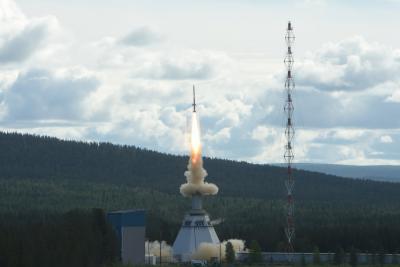Graphene Flagship partners, Université Libre de Bruxelles, University of Pisa and the University of Cambridge, in collaboration with the European Space Agency (ESA) and the Swedish Space Corporation (SSC), recently launched The Materials Science Experiment Rocket (MASER) into space. The objective is to test the printing of graphene patterns on silicon substrates in zero gravity conditions.

The experiment aims to test the possibilities of printing graphene inks in space. Studying the different self-assembly modes of graphene into functional patterns in zero-gravity will enable the fabrication of graphene electronic devices during long-term space missions, as well as help understand fundamental properties of graphene printing on Earth. This mission is also a first step towards the investigation of graphene for radiation shielding purposes, an essential requirement of manned space exploration.
This research follows the zero-gravity parabolic flight campaign that took place in May 2018. The earlier experiment enabled 24 seconds of microgravity to test these same properties and the quality of graphene dispersions prepared by Graphene Flagship Partner University of Cambridge.
Taking this research a step further, the flight of the MASER 14 rocket launched 250km above the Earth surface from Esrange, Sweden, enabled more than six minutes of microgravity, giving researchers additional time to carry out their tests, which will validate graphene's self-assembly properties.
"Testing the evaporation of droplets seeded with graphene is an important step towards the comprehension of phenomena involved in coating technologies and energy applications and an enabling factor in the commercialization of this material for creating a new life-support ecosystem in future human space exploration," explained Carlo lorio, leader of the space activities carried out by the Graphene Flagship, and a researcher at Graphene Flagship partner Université Libre de Bruxelles. "There is no better way to validate graphene's potential than to send it to the environment it will be used in," added Iorio.
"Graphene has unique conductivity properties that scientists are continuing to take advantage of in new processes, devices and in this case, coatings. Experiments like these are fundamental to graphene's success and integral for building the material's reputation as the leading material for space applications," he says.